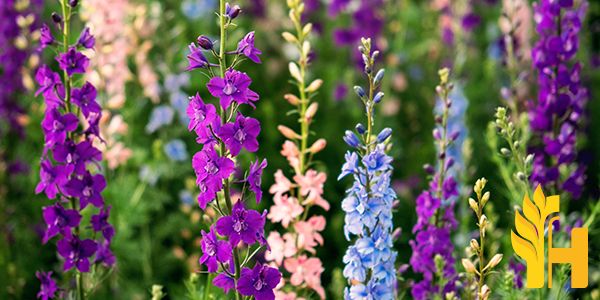Delphinium price

Where to buy and sell Delphinium, lowest (cheapest) and highest price.
check offers buy sell DelphiniumToday price for DelphiniumDelphinium wholesale prices 2022
The Current commodity price of Delphinium per kg, pound in the world in the global markets
imported delphinium small
Price range: 168 - 168 CNY / 1 kg | Market: Taipei Market | Date: 2024-02-01
imported delphinium small
Price range: 250 - 280 CNY / 1 kg | Market: Taipei Market | Date: 2023-12-18
imported delphinium small
Price range: 257 - 289 CNY / 1 kg | Market: Taipei Market | Date: 2023-12-04
Delphinium
Delphinium elatum is a perennial herbaceous flowering plant that is commonly known as the larkspur. The plant grows between 1 and 2 meters in height and produces multiple thick stems from a thick, fleshy tuberous rootstock. It bears dark green palmately-lobed leaves and large flowerheads with prominent spurs that curve backward. The 6-21 cm long sepals are placed behind the flowerhead and together with the bracts form a small cup that encloses the base of the nectar-rich spurs.Spur length is up to about 15 cm in smaller larkspurs, but can reach 30 cm in some taller species; spur width is up to 6 cm in some very large species. The 36-55 dark blue to violet, rarely white petals of the flowerhead encircle around 80 orange or yellow stamens. Flowering begins in late spring and may continue until early fall; all larkspurs are self-sterile.
Each flowering stem produces 1 or 2 terminal flowerheads, each subtended by a pair of lance-shaped bracts, one leaflike and about 10 cm long, the other narrower and shorter. Like many other perennial plants of this family, the stems die away at the end of the growing season and are replaced by small tubers. The petal color varies from white to a very light purple, or rarely dark blue or red.
The flowerheads are produced in open sprays or racemes, with up to 100 flowers. Each individual flower is subtended by a pair of pointed bracts and enclosed at its base by a cup-shaped involucre consisting of six spoon-shaped bractlets. The dark blue, pink or white petals are all similar, except the lowest petal, which is larger and broader than the others.
The seed-producing flowers are followed by attractive seed heads that resemble those of some bluebirds. The fruit is a cluster of 2 to 10 follicles, each containing numerous seeds embedded in a sweet pulp.
"Delphinium elatum" is an ornamental plant with large blue flowers that are commonly used in gardens and for cut-flower arrangements. It has been cultivated since 1578, though it is often hard to establish because of the small size of its tubers.
Global delphinium production
Delphinium is a genus of about 300 species of perennial flowering plants in the buttercup family Ranunculaceae, native throughout the Northern Hemisphere and also on the high mountains of tropical Africa. Global production of delphinium is led by China with more than 80% of the world total, followed by New Zealand, the United Kingdom, and Chile. The name delphinium derives from the Latin word for dolphin (delphinus), which was probably inspired by the shape of the flower's natal bowl. The cultivation of delphiniums began in England during the Victorian era. The plant was brought to New Zealand in 1885 by the first director of the Dunedin Botanic Garden, John Buchanan. Today, delphiniums are grown commercially for cut flowers in many parts of the world. The primary markets are in Europe and North America. In China, delphiniums are mostly grown in the provinces of Heilongjiang, Jilin, and Inner Mongolia. The United Kingdom is the second-largest producer of delphiniums, with a significant portion of the crop grown in Scotland. New Zealand is the third-largest producer, followed by Chile. The primary use for delphiniums is as cut flowers. They are also used in landscaping and as dried flowers. Delphiniums are popular cut flowers because they have long stems and are relatively easy to grow. The flowers have a short vase life, however, so growers must be able to time the harvest correctly in order to maximize their crop.Download our new
Husfarm App
Stay up to date with the current prieces of agricultural products all over the world.
Do you want to sell agricultural products?
Are you an Agricultural processor looking for high-quality products to buy?
Post an ad for FREE!
